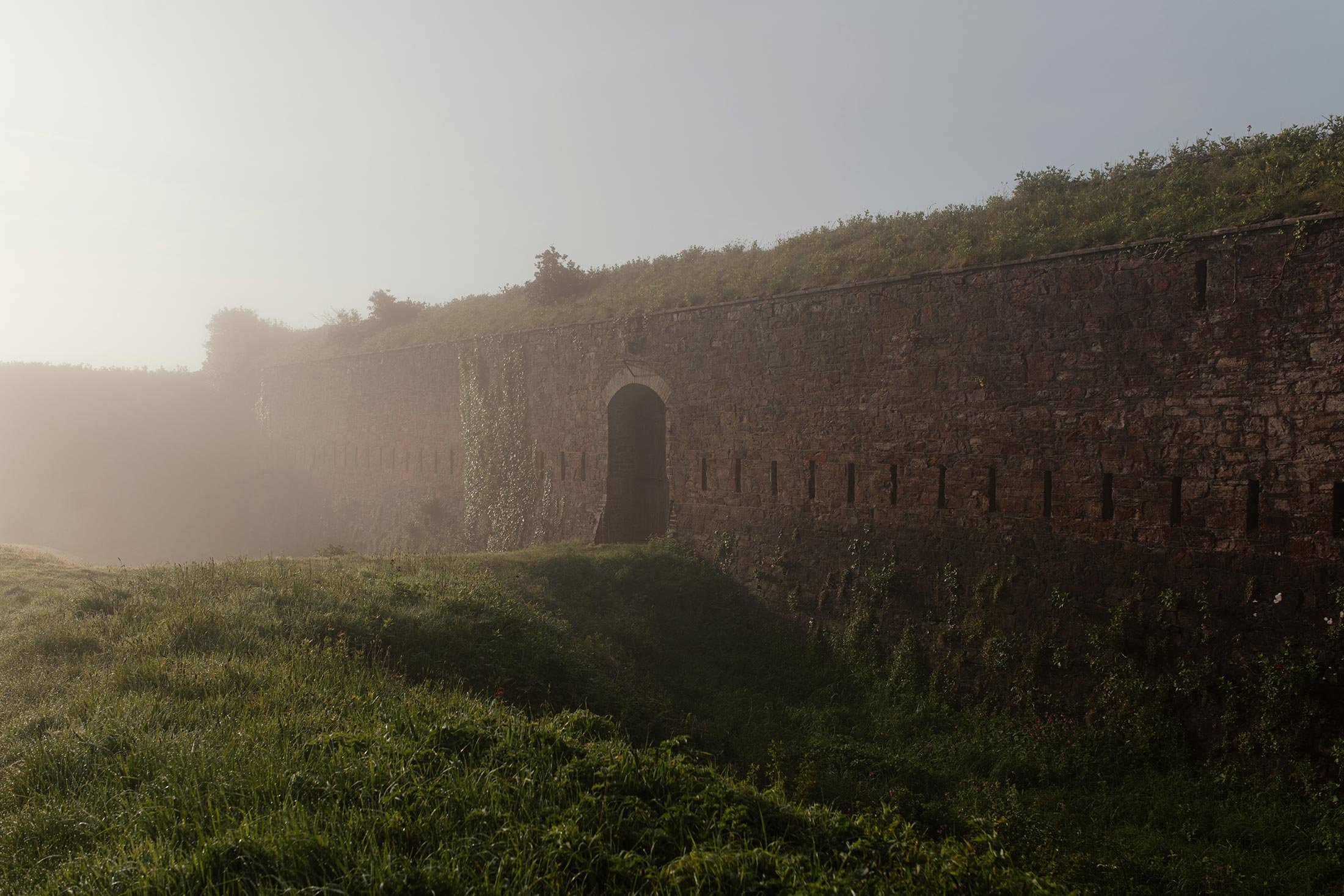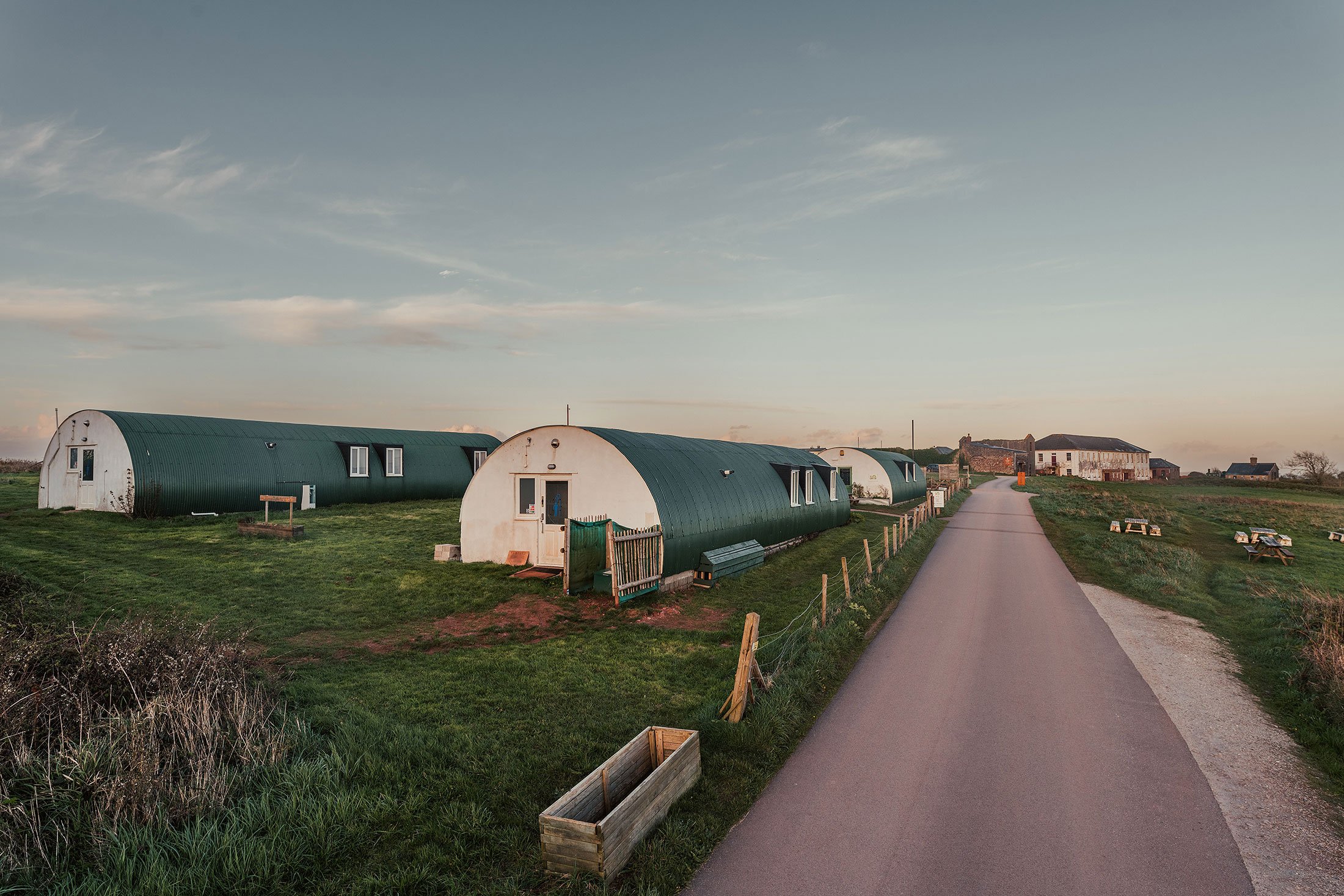
Redoubt No.4
Redoubt No.4 / Grenville Battery
Redoubt No. 4 is the southern most of the line of 5 Redoubts built at Maker. Constructed in 1779 by soldiers of the North Gloucester Militia. It was also originally an earthwork, but by 1782 had been strengthened with stone ‘revetting’. Further works were completed over the next ten years and by 1791a substantial, defensible barrack block had been added.
The barracks were constructed to a height sufficient to protect the gunners on the ramparts from fire from an attacking force, and it’s interesting to note that such an attack was thought most likely from the landward side. The roof of the barracks was constructed of vaulted brickwork topped by a stone ‘bursting’ course to absorb shock from any plummeting cannon fire, and then would have been slated. The barracks were single storey, but one room had one mezzanine floor for the commanding officer’s bedroom.
The barracks were designed as a defensive structure with loopholes along the north elevation. The 8 loopholes either side of the entrance doors were also angled to allow fire to protect the bridge across the dry moat. Access to the Redoubt was via a wooden bridge and unlike Redoubt 5, there is no sign of a drawbridge mechanism.
A stone ‘caponier’ (a fortified projection built across a ditch or moat) was also added to allow protective (enfilading) fire along both the northern and south-western faces.
Another interesting feature was that under the barracks a powder magazine was built, again using brick vaulting. A survey has confirmed that even after nearly 250 years, this magazine is still dry and well ventilated. A similar powder magazine was also built in Redoubt No. 5.
Redoubt No. 4 was fully armed by 1782. By 1790, eight muzzle-loading smooth-bore cannons were in place, thought to be 32-pdrs. The platforms can still be seen and were sited along the western and south-western faces – so all pointing inland. There were no seaward facing guns – a reminder that the perceived threat was from a landing not from coastal attack.
Like the other Redoubts, No.4 was decommissioned in 1815, after the battle of Waterloo. Nothing happened for the next 40 years until a further French threat was considered possible under Napoleon III, despite the two countries being allies in the Crimean War (1854-1858). The launch in 1859 by the French of the first ocean-going the ironclad (but wooden-hulled) warship,’ La Gloire’ changed naval warfare. This new ship was special in that it had new ‘sandwich’ armour consisting of layers of iron and oak that on test, repelled the heaviest (60lb) British naval shell. Technically - all wooden naval ships and their gunnery were then obsolete. This was negated by in 1860 by HMS Warrrior, a British iron-hulled, iron-clad frigate.
This new fear led to the then Prime Minister Lord Palmerston’s appointment of a Royal Commission in 1859, and subsequently a major fort building program to protect the main ports of Plymouth, Portsmouth, Chatham and Milford Haven was started. The only Redoubt affected by this review was Redoubt 4. All the others were considered redundant.
Redoubt No. 4 then had four 58 pdr canon installed on a new seaward facing battery, and then in 1887 had two 38 ton 12.5” rifled muzzle loading (RML) cannon mounted. These huge guns remained in place for a short time only because of their poor range (about 6,000 yards) and the time taken to reload of about 10 minutes. In 1899 the sea facing elevation of Redoubt No.4 was again re-engineered to include three new breech-loading 4.7” quick fire (QF) guns. This was because by that time any battleship coastal bombardment would have come from many miles offshore as naval gunnery had dramatically progressed. The 4’7” (120 mm) QF guns, with a range of about 10,000 yards and a fire rate of about 8 – 10 rounds per minute, were intended to protect Plymouth Sound from smaller hostile ship incursions. It was at this point Redoubt 4 was renamed Grenville Battery.
Grenville remained fully armed until @ 1908 when it was downgraded to a practice battery. The guns were finally removed in 1928, and Grenville was abandoned by the military in 1948.
Research suggests Grenville was subsequently lived in by a Mr Cook in the 1950’s when it was taken over by squatters, suffering serious structural damage. Today the Rame Conservation Trust is in the process of developing a detailed restoration plan, supported by Historic England and Cornwall National Landscape (formally AONB).
Grenville Battery is a scheduled monument. It is open to the public by pre-arrangement and guided tours are available during the Heritage Open Days festival. If you would like a tour of Redoubt No. 4 please contact us. Organised groups are welcome.
Redoubt No.4 gallery




















